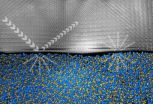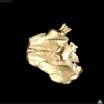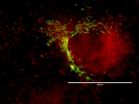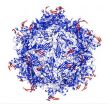(Press-News.org) (Boston) – Have you ever said to yourself that you would only have a handful of potato chips from the bag then, minutes later, realized you ate the whole thing? A recent study shows that this type of impulsive behavior might not be easily controlled – and could be a risk factor in the development of food addiction and eating disorders as a result of cellular activities in the part of the brain involved with reward.
The research, published online in Neuropsychopharmacology, was led by Boston University School of Medicine (BUSM) and conducted in collaboration with the University of Cambridge in the United Kingdom. It also points out the common mechanisms involved between drug and food addiction.
Research has shown that people with eating disorders and obesity are known to be more impulsive than healthy people. For example, they may be more likely to blurt out something that they later regret saying or to start an activity without thinking through the consequences. However, it was unclear whether the impulsivity existed before the dysfunctional eating behavior or if developed as a result of it.
BUSM researchers attempted to answer this question by measuring the inability to withhold an impulsive response in experimental models that were exposed to a diet high in sugar daily for one hour. Models shown to be more impulsive rapidly developed binge eating, showing heightened cravings and the loss of control over the junk diet (measured as inability to properly evaluate the negative consequences associated with ingestion of the sugary diet). Conversely, models shown to be less impulsive demonstrated the ability to appropriately control impulsive behavior and did not show abnormal eating behavior when exposed to the sugary diet.
Interestingly, the impulsive models showed increased expression of a transcription factor called Delta-FosB in the nucleus accumbens, an area of the brain involved in reward evaluation and impulsive behavior, indicating a potential biological component to this behavior.
"While impulsivity might have aided ancestors to choose calorie-rich foods when food was scarce, our study results suggest that, in today's calorie-rich environment, impulsivity promotes pathological overeating," said Pietro Cottone, PhD, co-director of the Laboratory of Addictive Disorders and associate professor of pharmacology and psychiatry at BUSM.
"Our results add further evidence to the idea that there are similar mechanisms involved in both drug and food addiction behavior," said Clara Velazquez-Sanchez, PhD, postdoctoral fellow in the Laboratory of Addictive Disorder and first author of the study.
INFORMATION:
Other contributors to the study include Valentina Sabino, PhD, co-director of the Laboratory of Addictive Disorders and assistant professor of pharmacology and psychiatry at BUSM; Antonio Ferragud, PhD, and Cassie Moore from BUSM; and Barry Everitt, ScD, from the University of Cambridge, UK.
Research included in this study was supported in part by the National Institute on Drug Abuse, the National Institute of Mental Health, the Peter Paul Career Development Professorship, the McManus Charitable Trust, and Boston University's Undergraduate Research Opportunities Program (UROP).
Study shows that impulsivity is risk factor for food addiction
2014-05-06
ELSE PRESS RELEASES FROM THIS DATE:
Linking vascular inflammation to obesity and atherosclerosis
2014-05-06
A study in The Journal of Experimental Medicine shows that IκB kinase β (IKKβ) functions in smooth muscle cells to regulate vascular inflammatory responses and atherosclerosis development.
Inflammatory responses are the driving force of atherosclerosis, a process that involves the hardening and thickening of artery walls due to excess fatty deposits. IKKβ is a central coordinator of inflammatory responses that has been implicated in vascular diseases, but its role in atherosclerosis has been unclear.
Now, Changcheng Zhou and colleagues from the ...
Staying on task in the automated cockpit
2014-05-06
Automation in the cockpit is traditionally believed to free pilots' attention from mundane flight tasks and allow them to focus on the big picture or prepare for any unexpected events during flight. However, a new study published in Human Factors indicates that pilots may have a hard time concentrating on the automated systems that now carry out many of the tasks once completed by humans.
"The automated systems in today's cockpits assume many of the tasks formerly performed by human pilots and do it with impressive reliability," says Stephen Casner, coauthor of "Thoughts ...
Graphene for real-world devices
2014-05-06
Graphene, a one-atom-thick form of the carbon material graphite, has been hailed as a wonder material — strong, light, nearly transparent, and an excellent conductor of electricity and heat. But a number of practical challenges must be overcome before it can emerge as a replacement for silicon and other materials in microprocessors and next-generation energy devices.
One particular challenge concerns the question of how graphene sheets can be used in real devices.
"When you fabricate devices using graphene, you have to support the graphene on a substrate and doing ...
Cedars-Sinai researchers identify how heart stem cells orchestrate regeneration
2014-05-06
LOS ANGELES (EMBARGOED UNTIL NOON ET ON MAY 6, 2014) – Investigators at the Cedars-Sinai Heart Institute – whose previous research showed that cardiac stem cell therapy reduces scarring and regenerates healthy tissue after a heart attack in humans – have identified components of those stem cells responsible for the beneficial effects.
In a series of laboratory and lab animal studies, Heart Institute researchers found that exosomes, tiny membrane-enclosed "bubbles" involved in cell-to-cell communication, convey messages that reduce cell death, promote growth of new heart ...
Redescription of the oldest-known dolphin skull sheds light on their origins and evolution
2014-05-06
VIDEO:
This is the CT image of the skull of the holotype of Eodelphis kabatensis.
Click here for more information.
Dolphins are the most diverse family of living marine mammals and include species such as the bottlenose dolphin and the killer whale. However, their early evolution and fossil record has been steeped in mystery due to lack of good specimens. A new paper published in latest issue of the Journal of Vertebrate Paleontology re-describes the oldest species of dolphin ...
One step closer to cell reprogramming
2014-05-06
In 2012, John B. Gurdon and Shinya Yamakana were awarded the Nobel Prize in medicine for discovering that adult cells can be reprogrammed into pluripotent ones (iPS); the cells obtained are capable of behaving in a similar way to embryonic stem cells, and hence have enormous potential for regenerative medicine.
However, although there are many research groups around the world studying this process, it is still not completely understood, it is not totally efficient, and it is not safe enough to be used as the basis for a new cell therapy.
Now, researchers at the Centre ...
Can you tell a person's gender by their video game avatar?
2014-05-06
This news release is available in French.
Montreal, May 6, 2014 — A sexy wood elf with pointy ears. A hulking ogre with blue skin. An intimidating heroine with a buxom breastplate. When it comes to computer games, players can choose to be anyone or anything. But gamers don't always mask their true identities with online avatars.
According to a new study by researchers at Concordia University, Colorado State University, Syracuse University, Hofstra University and the University of Toronto, a male gamer who chooses to play as a female character will still display ...
The Red Sea -- an ocean like all others, after all
2014-05-06
Pacific, Atlantic and Indian Ocean, with the land masses of the Americas, Europe, Asia, Africa and Australia in between – that's how we know our earth. From a geologist's point of view, however, this is only a snapshot. Over the course of the earth's history, many different continents have formed and split again. In between oceans were created, new seafloor was formed and disappeared again: Plate tectonics is the generic term for these processes.
The Red Sea, where currently the Arabian Peninsula separates from Africa, is one of the few places on earth where the splitting ...
Protein molecule may improve survival in deadly lung disease
2014-05-06
Researchers at the University of Illinois at Chicago College of Medicine have discovered a protein molecule that seems to slow the progression of pulmonary fibrosis, a progressive lung disease that is often fatal three to five years after diagnosis.
The finding is reported in the American Journal of Respiratory and Critical Care Medicine.
Nearly five million people worldwide are affected by pulmonary fibrosis, which causes the lungs to become covered in fibrous scar tissue and leads to shortness of breath that gets more severe as the disease progresses.
Chronic inflammatory ...
Two-lock box delivers cancer therapy
2014-05-06
Rice University scientists have designed a tunable virus that works like a safe deposit box. It takes two keys to open it and release its therapeutic cargo.
The Rice lab of bioengineer Junghae Suh has developed an adeno-associated virus (AAV) that unlocks only in the presence of two selected proteases, enzymes that cut up other proteins for disposal. Because certain proteases are elevated at tumor sites, the viruses can be designed to target and destroy the cancer cells.
The work appears online this week in the American Chemical Society journal ACS Nano.
AAVs are ...




